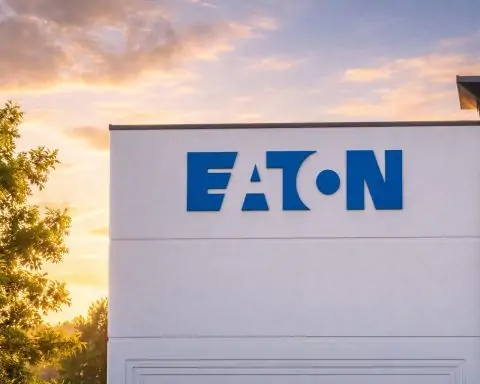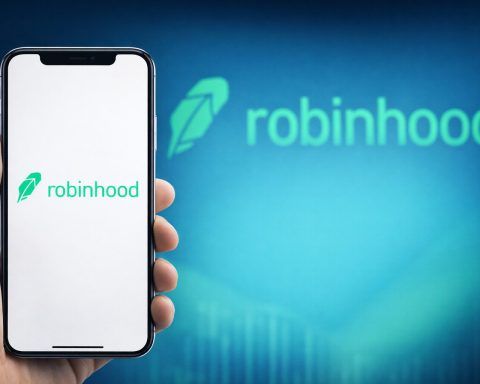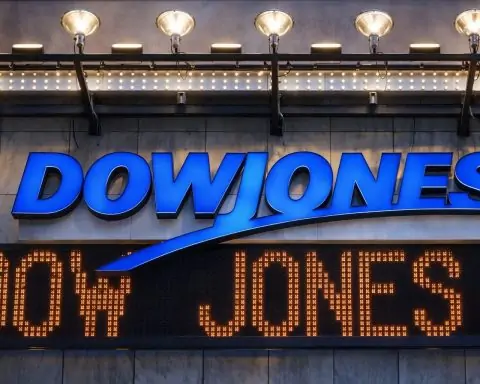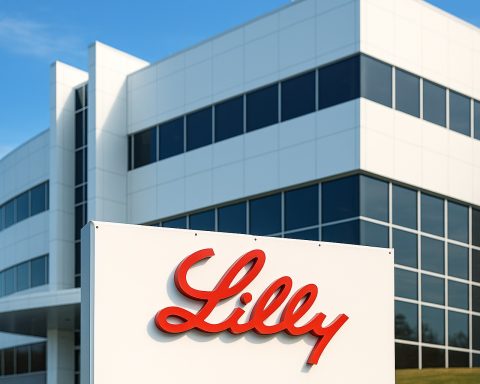Key facts (quick read)
- What happened this week: Early clinical trial data for AMT‑130, an AAV5 gene therapy delivered by neurosurgery into the striatum, reported a 75% slowing of Huntington’s disease (HD) progression at 36 monthsin the high‑dose group vs. matched natural‑history controls. [1]
- Why it matters: This is the first time any intervention has shown sustained, statistically significant slowing on the composite Unified Huntington’s Disease Rating Scale (cUHDRS) and Total Functional Capacity (TFC) in people with HD. [2]
- Independent coverage: The results were covered by UCL/UCLH, STAT, The Guardian and The Economist(paywalled). Full manuscripts are pending peer review. [3]
- How the therapy works: AMT‑130 uses an AAV5 vector to deliver a microRNA (miHTT) that silences HTT mRNA (both mutant and wild‑type) in targeted brain regions. [4]
- Biomarker signal: CSF neurofilament light (NfL)—a marker of neurodegeneration—fell below baseline at 36 months in treated participants. [5]
- Surgery details: Treatment is a single, MRI‑guided infusion into the caudate/putamen; the neurosurgical procedure can last 12–20 hours. [6]
- Regulatory path: The developer plans to file in the U.S. in 2026 (BLA) if confirmatory steps hold; access and pricing will be key debates. [7]
- Context: In the U.S., ~41,000 people are symptomatic and >200,000 are at risk; UK prevalence is ~1 in 10,000. [8]
- What HD is: An autosomal‑dominant illness caused by CAG repeat expansion in HTT: ≥40 repeats = full penetrance; 36–39 = reduced penetrance; 27–35 = intermediate. [9]
- Current symptom medicines: FDA‑approved VMAT2 inhibitors for chorea include tetrabenazine, deutetrabenazine, and valbenazine. (Examples: Austedo label; Ingrezza approval 2023.) [10]
- Other pipelines: Antisense/siRNA programs (tominersen, WVE‑003) and small‑molecule splicing modulators (branaplam halted in 2022) show mixed but evolving evidence. [11]
- Comparable breakthroughs: “One‑time” gene or cell therapies are now real in other diseases (CASGEVY for sickle cell, Zolgensma for SMA, Hemgenix for hemophilia B), anchoring debates on durability and cost. [12]
In‑depth report
1) Huntington’s disease, in plain English
What it is. HD is a progressive brain disorder that typically begins in mid‑adulthood, causing a mix of movement (chorea, dystonia), cognitive (processing speed, executive function) and psychiatric symptoms (depression, irritability). It is uniformly fatal over years to decades. [13]
Genetics. HD is autosomal dominant: each child of an affected parent has a 50% chance to inherit the expansion. The disease is caused by CAG repeat expansion in HTT: ≥40 repeats almost always cause disease in a normal lifespan; 36–39 have reduced penetrance; 27–35 are intermediate (no disease in the carrier but potential expansion in offspring). Anticipation—earlier onset in successive generations—occurs, especially with paternal transmission. [14]
How common. The U.S. HD community estimates ~41,000 symptomatic people and >200,000 at risk; UK prevalence is ~1 in 10,000. [15]
2) The news: a first durable slowdown with AMT‑130
On September 24, 2025, uniQure announced positive topline data from its pivotal Phase I/II study of AMT‑130—an in‑brain gene therapy for HD. In the high‑dose cohort (n=12 with full 36‑month follow‑up), disease progression on cUHDRS slowed by 75% compared with a propensity‑matched external control from the large Enroll‑HD dataset; TFC also favored treatment. Mean CSF NfL was below baseline at 36 months, consistent with reduced neurodegeneration. Safety was described as manageable. [16]
UCL summarized this as the first continuing, statistically significant slowing of HD progression ever reported in a drug trial, noting the comparison to Enroll‑HD and the multi‑measure benefit. [17]
Prof. Sarah Tabrizi (UCL): “I am thrilled that this study of AMT‑130 showed statistically significant effects on disease progression at 36 months.” [18]
Prof. Ed Wild (UCL/UCLH): “This result changes everything.” [19]
Independent reporting by STAT and The Guardian emphasized the scale of the effect and the one‑time, neurosurgical nature of delivery; The Economist framed it as a “clever genetic technique” that halts the toxic protein (paywalled). Peer‑reviewed manuscripts and regulator dossiers are the next step. [20]
Important caveats.
- The pivotal study uses an external control (not a fully randomized, concurrently controlled arm), which can introduce bias despite careful matching.
- Sample sizes are small, with 36‑month analyses available for subsets at each dose.
- Results were released via press materials/academic news; full peer‑review and regulator analysis are pending. [21]
3) How AMT‑130 works (and why it’s hard)
Mechanism. AMT‑130 uses AAV5 to deliver DNA encoding a microRNA (miHTT) that binds HTT mRNA and reduces huntingtin protein production (both mutant and wild‑type) in the caudate/putamen—the brain’s movement hub badly hit in HD. Preclinical rodent and minipig studies showed broad distribution and strong huntingtin lowering after intrastriatal infusion. [22]
Procedure. The therapy is infused once, via MRI‑guided convection‑enhanced delivery into the striatum; clinical protocols describe bilateral catheters placed during long neurosurgical procedures (often 12–20 hours). [23]
Biomarker readout. CSF NfL typically rises over time in HD; the reported drop below baseline after AMT‑130 supports a disease‑modifying effect, aligning with the clinical endpoints. [24]
4) How this compares with other HD approaches (“similar products”)
| Strategy | Modality & Route | Target | Dosing | Where things stand |
|---|---|---|---|---|
| AMT‑130(uniQure) | In vivo AAV5 miRNA; striatal neurosurgery | HTT mRNA (non‑allele‑selective) | One‑time | 75% slowing at 36 months (high dose) vs matched controls; BLA planned (2026). [25] |
| Tominersen(Roche/Ionis) | Intrathecal ASO | HTT mRNA (non‑selective) | Repeated | Original Ph3 negative (2021); GENERATION HD2 ongoing with dose changes; interim iDMC backed continuing 100 mg. [26] |
| WVE‑003(Wave Life Sciences) | Intrathecal ASO | Allele‑selective mHTT | Repeated | First clinical demonstration of allele‑selectivelowering (Phase 1b/2a). [27] |
| Branaplam(Novartis) | Oral splicing modulator | HTT mRNA | Repeated | Dosing suspended in 2022 for neuropathy signals. [28] |
Bottom line: AMT‑130’s major advantage is durability from a single procedure; trade‑offs are invasiveness, irreversibility, and questions of long‑term safety and wild‑type HTT suppression. Repeat‑dose ASOs/siRNAs avoid brain surgery and can be adjusted or stopped, but require ongoing administration and (to date) have not shown multi‑year slowing on global clinical endpoints. [29]
5) Comparing to “similar topics” beyond HD (why this breakthrough resonates)
Other gene/cell therapies have recently redefined care in single‑gene disorders:
- Sickle cell disease (CASGEVY/exa‑cel): first FDA‑approved CRISPR‑based therapy (Dec 2023). Ex vivo gene‑edited cells are reinfused after conditioning; the therapy is entering NHS use in England in 2025. [30]
- Spinal muscular atrophy (Zolgensma): one‑time AAV9 replacing SMN1 in infants; set expectations for durability and newborn‑screening-linked access. [31]
- Hemophilia B (Hemgenix) and Beqvez: one‑time AAV gene therapy, but with multi‑million‑dollar list pricesthat fuel debates on value and payment models. [32]
These programs illustrate the promise (large effect sizes, potential one‑and‑done) and the practical challenges(manufacturing, surgical/conditioning risks, immunity to viral vectors, and affordability) likely to shape HD’s path if AMT‑130 advances. [33]
6) Diagnosis, staging & biomarkers (how doctors measure HD)
- Genetic testing confirms HD when HTT CAG expansion is present; counseling is essential because results impact life planning and family. [34]
- Clinical scales: The cUHDRS (composite of motor, cognition, and function) and TFC are common global endpoints; Enroll‑HD natural‑history data underpins external controls in trials like AMT‑130. [35]
- Biomarkers: NfL in CSF/blood tracks axonal injury and correlates with severity/progression; AMT‑130’s NfL decrease supports target engagement and potential neuroprotection. [36]
7) Current standard of care (what’s available today)
- Chorea treatment: VMAT2 inhibitors reduce involuntary movements—tetrabenazine, deutetrabenazine (Austedo) (label carries depression/suicidality warnings), and valbenazine (Ingrezza) (FDA added HD chorea to its label in 2023). Antipsychotics may help when psychiatric symptoms predominate. [37]
- Rehab & nutrition: Multidisciplinary care—physio/OT/speech therapy and proactive nutrition—improves function and safety; European HD Network and other groups publish practical guidance. [38]
- Mental health: Depression, irritability, and apathy are common; treatment and caregiver support are core elements of care. [39]
8) Genetics, family planning & rights (what at‑risk families ask)
- Predictive testing for asymptomatic adults is available but should follow structured protocols with counseling; testing does not predict exact age of onset. [40]
- Prenatal/PGT‑M options: Couples can consider chorionic villus sampling, amniocentesis, or preimplantation genetic testing with IVF (PGT‑M). [41]
- Insurance & privacy (U.S./UK): In the U.S., GINA protects against health‑insurance/employment discrimination but not life, disability, or long‑term care insurance. The UK has a Code on Genetic Testing and Insurance that limits insurer use of results. [42]
9) “HD‑like” conditions (phenocopies)
Rare disorders can mimic HD; the most important is HD‑like 2 (HDL2) caused by JPH3 repeat expansion, seen primarily in people of African ancestry. Genetic testing differentiates these conditions. [43]
10) What to watch next
- Peer‑reviewed publication of AMT‑130 data (full dataset, durability, off‑target effects). [44]
- Regulatory interactions on endpoints and external‑control methods in HD, given the rarity and surgical nature of treatment. [45]
- Confirmatory data from tominersen (GENERATION HD2) and allele‑selective WVE‑003, which could offer repeat‑dosing alternatives for different patient groups. [46]
- Access and pricing debates—precedents from CASGEVY, Zolgensma, and Hemophilia B gene therapies will loom large. [47]
News roundup (dated)
- Sep 24–26, 2025: UCL & UCLH highlight 75% slowing at 36 months; clinicians call results “world‑changing.” [48]
- Sep 24, 2025: uniQure press release details endpoints, NfL drop, and a BLA plan for 2026. [49]
- Sep 24–26, 2025: STAT and The Guardian report on the findings; The Economist publishes an analysis (paywalled). [50]
Frequently asked questions
Is this a cure?
No. The data show slower decline, not reversal. People on AMT‑130 still progressed—just more slowly than expected over three years. Longer follow‑up will clarify durability. [51]
Who might be eligible if approved?
Early‑manifest adults were studied so far. Broader use (e.g., premanifest) would require more data on benefit–risk and timing. [52]
What are the main risks?
Beyond neurosurgery itself, risks include off‑target suppression of wild‑type HTT, AAV immunity, and unknown long‑term effects of genomic transduction. Trial safety to date is described as manageable. [53]
How does this compare to Alzheimer’s or ALS breakthroughs?
Alzheimer’s antibodies (lecanemab, donanemab) show modest slowing with ongoing infusions; tofersen for SOD1‑ALS received accelerated approval based on biomarker change (NfL). AMT‑130 is a one‑time neurosurgical gene therapy with larger multi‑year effect sizes so far—but in a smaller, non‑randomized dataset. [54]
Sources & further reading
- Breaking data & institutional summaries: uniQure press release; UCL news; UCLH clinical site article; STAT coverage; Guardian reporting; Economist article (paywalled). [55]
- Mechanism & delivery: uniQure pipeline; HSG/HD Insights explainer; preclinical AAV5‑miHTT studies (rodent/minipig). [56]
- Standard of care & guidelines: Austedo (deutetrabenazine) FDA label; EHDN international guidelines; rehab guidance; Mayo/NINDS disease overviews. [57]
- Other pipelines: Roche/Ionis tominersen community letter (GENERATION HD2); Wave Life Sciences SELECT‑HD allele‑selective results; Novartis branaplam suspension. [58]
- Genetics & counseling: GeneReviews (HD); PGT‑M/PND resources; U.S. GINA and UK Code on Genetic Testing & Insurance. [59]
- Comparators in gene therapy: FDA on CASGEVY, Zolgensma; pricing/coverage context for Hemgenix/Beqvez. [60]
A clear note on evidence
The AMT‑130 findings are topline and not yet peer‑reviewed; they rely on external controls with careful matching but inherent limitations. Still, taken with the biomarker trajectory and multi‑domain clinical signals, they represent the strongest disease‑modifying evidence in HD to date—and justify cautious optimism while the field awaits full publications and regulatory assessment. [61]
If you’d like, I can tailor a patient‑friendly handout (one‑page) on these updates, or a technical appendix (trial design details, statistics, and endpoints) for clinicians and researchers.
References
1. www.globenewswire.com, 2. www.ucl.ac.uk, 3. www.ucl.ac.uk, 4. www.uniqure.com, 5. www.globenewswire.com, 6. hdsa.org, 7. www.globenewswire.com, 8. hdsa.org, 9. www.ncbi.nlm.nih.gov, 10. www.accessdata.fda.gov, 11. hdsa.org, 12. www.fda.gov, 13. www.ninds.nih.gov, 14. www.ncbi.nlm.nih.gov, 15. hdsa.org, 16. www.globenewswire.com, 17. www.ucl.ac.uk, 18. www.ucl.ac.uk, 19. www.ucl.ac.uk, 20. www.statnews.com, 21. www.globenewswire.com, 22. www.uniqure.com, 23. hdsa.org, 24. www.globenewswire.com, 25. www.globenewswire.com, 26. hdsa.org, 27. www.globenewswire.com, 28. www.novartis.com, 29. www.uniqure.com, 30. www.fda.gov, 31. www.fda.gov, 32. www.drugdiscoverytrends.com, 33. www.drugdiscoverytrends.com, 34. www.ncbi.nlm.nih.gov, 35. www.ucl.ac.uk, 36. www.globenewswire.com, 37. www.accessdata.fda.gov, 38. pmc.ncbi.nlm.nih.gov, 39. www.mayoclinic.org, 40. hdsa.org, 41. hdsa.org, 42. www.ashg.org, 43. pure.johnshopkins.edu, 44. www.globenewswire.com, 45. www.globenewswire.com, 46. hdsa.org, 47. www.fda.gov, 48. www.ucl.ac.uk, 49. www.globenewswire.com, 50. www.statnews.com, 51. www.globenewswire.com, 52. www.clinicaltrials.gov, 53. www.globenewswire.com, 54. www.fda.gov, 55. www.globenewswire.com, 56. www.uniqure.com, 57. www.accessdata.fda.gov, 58. hdsa.org, 59. www.ncbi.nlm.nih.gov, 60. www.fda.gov, 61. www.globenewswire.com










